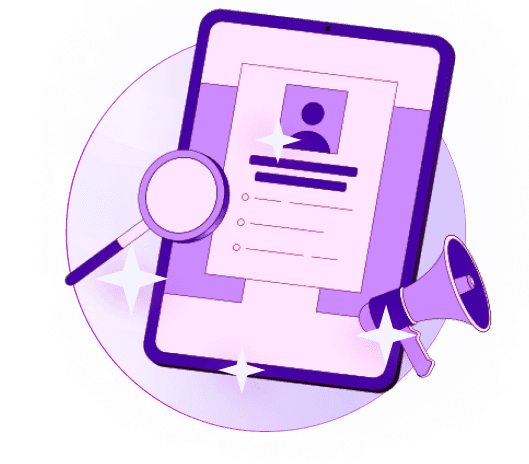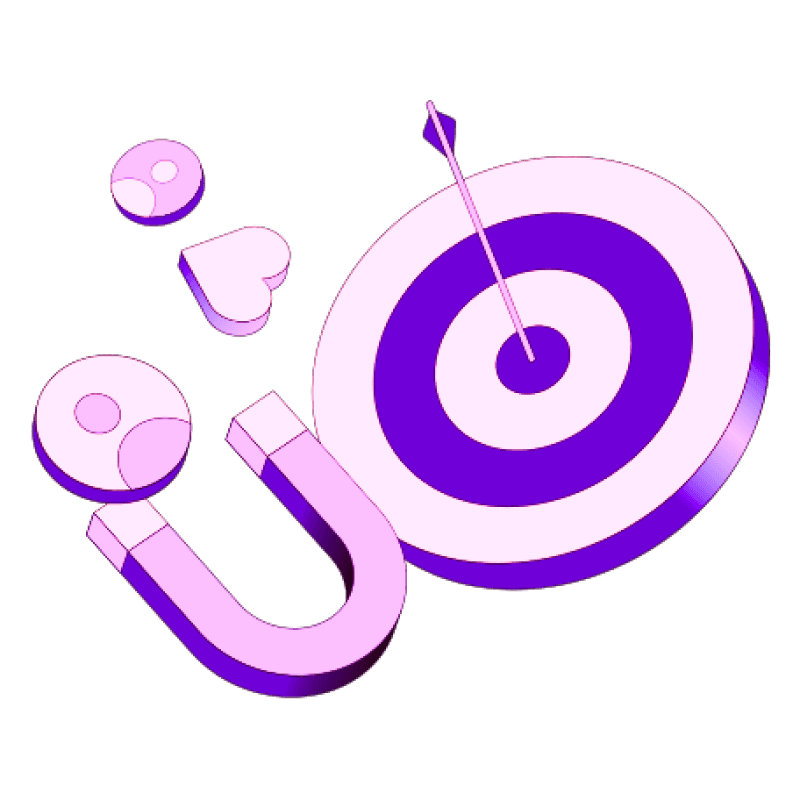Blogs
Articles

How to Set Up Marketing Triggers That Get Results: From Basics to Advanced
Marketing triggers can make your emails 497% more effective than regular blast campaigns. Did you know that?
The true power of trigger marketing lies in its efficiency. We connect with customers at the time they need our products or services. These timely interactions also create opportunities that build trust, loyalty, and satisfaction.
This piece will walk you through everything from simple trigger marketing concepts to advanced implementation techniques that work in ground situations. You'll find value whether you're just starting out or looking to refine your approach.
What is a trigger in marketing?
Marketing triggers are the foundations of automated, individual-specific marketing strategies that respond to specific customer actions or attributes. Trigger marketing automatically initiates marketing actions based on customer behavior or profile information.
Trigger marketing outperforms traditional marketing approaches by delivering precisely timed communications. Brands send the right message to the right contact at the perfect moment. This approach helps brands create relevant, individual-specific experiences while maintaining scalability.
Triggers generally fall into two main categories:
Behavioral and Functional Triggers occur when customers take specific actions:
Opening emails
Downloading content
Clicking CTAs in newsletters
Visiting specific web pages
Completing forms
Interacting with chatbots
Abandoning shopping carts
Personal Triggers relate to customer profile attributes:
Reaching certain lead scoring thresholds
Updating profile information (job position, sector, budget)
Life events or milestones
Trigger marketing's versatility makes it powerful. Your automated system responds through multiple channels once a trigger activates. These channels include emails, SMS messages, push notifications, chatbot responses, and maybe even direct mail.
Automated trigger marketing helps businesses build genuine human connections. Companies show they care by responding quickly to customer actions with relevant content. This guides better communication and stronger relationships that end up creating better business outcomes.
What are trigger campaigns?
Trigger campaigns are the ground application of marketing triggers that work as automated marketing sequences activated by specific customer actions or events. These campaigns follow a simple "when this, send that" approach to marketing.
Standard scheduled campaigns can't match trigger campaigns that respond to each customer's behavior live. A customer's action, milestone achievement, or time elapsed since their last interaction activates these campaigns. These campaigns run on multiple channels at once to create a seamless omnichannel experience.
Trigger campaigns use these key communication channels:
Email sequences
Push notifications
SMS messages
In-app messages
Social media communications
Chatbot interactions
Perfect timing and relevance make trigger campaigns so effective. Your brand stays fresh in customers' minds because these messages reach them right when they're ready to buy or looking for similar products. This perfect timing doesn't compromise personalization - a key factor that makes customers feel special.
Skipping trigger campaigns can get pricey. Response rates drop 30-40% each week after a trigger event, and effectiveness falls by half after just three weeks.
Types of Marketing Triggers You Can Use
Smart marketers know how to reach customers at the perfect moment by using different types of triggers. Here are the five most powerful marketing triggers that will revolutionize your campaigns:
Onboarding triggers
New subscribers, first-time buyers, and account creators activate onboarding triggers. These triggers help users get maximum value from your products or services through a series of steps. BlueShift's research shows that personalized onboarding email campaigns work 800% better than mass emails. My experience shows that welcome emails create vital first impressions, and well-laid-out onboarding sequences boost activation rates significantly.
Event-based triggers
Customer life moments and calendar events activate event-based triggers. Major life changes like moving homes, marriages, new children, and retirement fall into this category, along with seasonal events such as Black Friday or company milestones. Event-triggered marketing builds emotional bonds with customers that result in lasting trust and brand loyalty. To cite an instance, furniture retailers target new homeowners with special deals.
Engagement-based triggers
Customer interactions with your brand activate engagement triggers. These triggers help solve the biggest problem of low website engagement that results in poor conversion rates. You can use these triggers to reactivate dormant users, follow up after content downloads, or respond to abandoned carts. Smart use of engagement triggers helps bring back customers before they leave permanently.
Time-based triggers
Specific dates or schedules drive time-based triggers. Birthday offers, membership anniversaries, and maintenance reminders are common examples. Marketing impact drops by 30-40% each additional week after a trigger event. Quick communication matters greatly here. Limited-time offers create urgency that drives faster purchases.
Location-based triggers
Physical location data powers location-based triggers to deliver targeted messages. 74% of smartphone owners now use location-based services, creating amazing opportunities to reach customers at the right moment.
How to Set Up a Trigger-Based Marketing Campaign
The path to building effective trigger-based campaigns needs good planning and step-by-step implementation. Here's my guide to six key steps that will help you develop campaigns with consistent results.
Define your campaign goals
Your first task is to set clear objectives that line up with your business targets. Marketing goals should drive specific outcomes like revenue growth, better customer retention, or higher engagement. Skip vague goals like "generate more leads." Focus on specific, measurable targets such as "acquire 50 new customers in the next 3 months". A mix of quick wins and long-term gains will help you catch all valuable opportunities.
Segment your audience
Your customer base needs grouping based on behavior, priorities, or demographics. Good segmentation will give your messaging the right reach with relevant content. Think about groups like new vs returning visitors, active vs inactive users, or regular buyers vs one-time shoppers.
Choose the right triggers
The right triggers should match your audience's stage in their trip. These triggers decide who enters your campaign and when - they're the "if" part of your "if/then" marketing equation. Smart filters help refine who should enter and stay in your campaign. You'll get better results by controlling how often someone triggers your campaign.
Create personalized content
Your messages should speak directly to each segment's needs. Tailored content makes a big difference - 72% of consumers say they only respond to personalized messages. Make it specific: "You left [Product] in your cart. Here's a 10% discount to complete your purchase!".
Set up automation tools
The right tech cuts down manual tasks quickly. Start by connecting your store or CRM to your marketing platform to utilize customer data. Next, build automated workflows that respond to specific events. Your automated messages should sound natural and reach the right people.
Test and optimize your campaign
Keep testing subject lines, email content, and timing. A/B tests will show you the best campaign frequency. Watch your key metrics - open rates, click-through rates, and conversion data will help you fine-tune your approach.
Trigger Marketing Examples That Drive Results
Top industry leaders have shown why trigger marketing has become vital for today's marketers. Let's get into some ground examples that produced impressive results.
Welcome emails beat standard marketing messages hands down, with a remarkable 58% open rate. Adobe shows this perfectly by adding helpful links and free trial invitations in their original communications. This creates instant value for new subscribers.
Abandoned cart emails serve as a powerful trigger strategy. These quick reminders keep customers from buying elsewhere and stay connected to your brand. The numbers speak for themselves - automated email campaigns hit a 71% conversion rate. We targeted specific user behaviors at key decision points.
Trigger-based marketing helps financial institutions reach prospects right when they think about switching banks. Betsy King from Byline Bank discovered that trigger marketing attracted new customers and streamlined processes.
Conclusion
Marketing triggers are powerful tools that modern marketers use today. Trigger-based marketing beats traditional approaches and creates customized messages that customers value. The numbers tell the story - triggered emails are 497% more effective and companies that use automation see 53% more conversions.
Success in trigger marketing depends on perfect timing. The impact drops by half after three weeks from a trigger event. Companies need to act fast to grab these crucial moments in the customer's experience. This makes sense since more than 70% of customers switch brands during major life changes.
Marketers who want to improve their trigger campaigns can use Persana.ai. It provides budget-friendly automation tools that help build advanced trigger marketing strategies easily.
FAQs
Q1. What is trigger marketing and why is it effective?
Trigger marketing is an automated marketing strategy that responds to specific customer actions or attributes. It's highly effective because it delivers personalized messages at the right time, resulting in up to 497% higher effectiveness compared to regular marketing campaigns.
Q2. What are some common types of marketing triggers?
Common types of marketing triggers include onboarding triggers, event-based triggers, engagement-based triggers, time-based triggers, and location-based triggers. Each type targets customers at different stages of their journey or based on specific behaviors and attributes.
Q3. How do I set up a trigger-based marketing campaign?
To set up a trigger-based marketing campaign, start by defining clear goals, segmenting your audience, choosing appropriate triggers, creating personalized content, implementing automation tools, and continuously testing and optimizing your campaign.
Q4. What are some examples of successful trigger marketing campaigns?
Successful trigger marketing examples include welcome emails with high open rates, abandoned cart reminders, inventory update notifications, birthday and milestone emails, and survey/feedback requests. These campaigns often result in increased engagement and conversions.

Create Your Free Persana Account Today
Join 5000+ GTM leaders who are using Persana for their outbound needs.
How Persana increases your sales results
One of the most effective ways to ensure sales cycle consistency is by using AI-driven automation. A solution like Persana, and its AI SDR - Nia, helps you streamline significant parts of your sales process, including prospecting, outreach personalization, and follow-up.



